PREVIOUS
Midday Meal Scheme – Part 2
September 17 , 2023
831 days
4556
0
(இதன் தமிழ் வடிவத்திற்கு இங்கே சொடுக்கவும்)
National Programme on Nutritional Support to Primary Education (NP-NSPE) (Midday Meal Scheme)
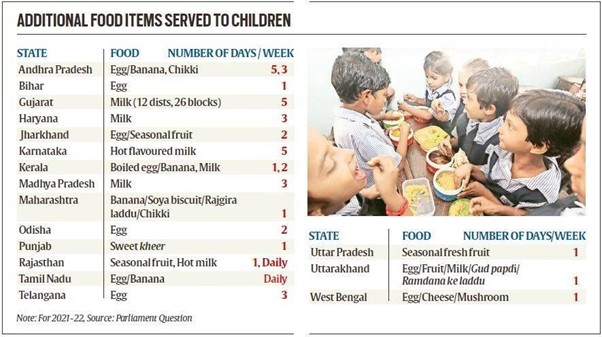
- It is commonly known as Midday Meal Scheme.
- The Government of India launched National Programme of Nutritional Support to Primary Education on August 15, 1995.
- It will provide mid-day meal to the children studying at primary stage.
- It was first launched by Tamil Nadu in 1920.
- The Midday Meal Scheme has been implemented in the Union Territory of Puducherry under the French Administration since 1930.
- By the mid-1980s, the scheme was expanded to Kerala, Gujarat, and Pondicherry.
- In 2001, the Supreme Court of India directed all state governments to provide cooked mid-day meals in all government and government-aided primary schools.
- This was extended to upper primary (classes VI to VIII) children in 3,479 Economically Backwards blocks (EBBs) in 2007.
- Then it was universalized at the elementary level in the year 2008.
Objectives
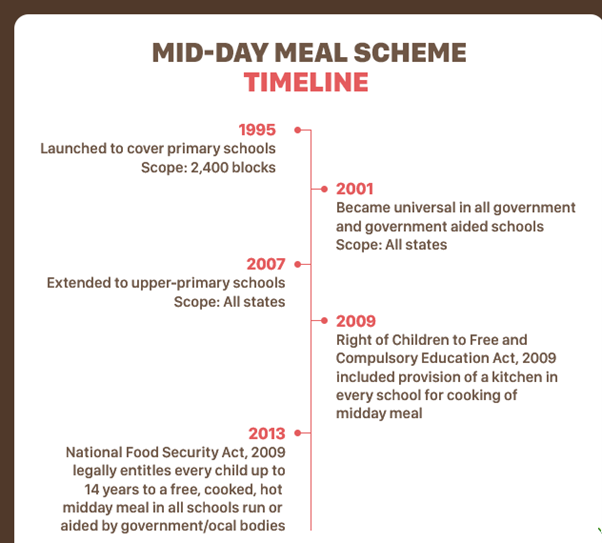
- To protect the children from classroom hunger
- To increase the school enrolment and attendance
- To reduce the gender gap in education and nutrition.
- To improve the socialization among children belonging to all castes
- To address the issue of malnutrition among children
- To social empowerment of women by creating employment to women
- Improving the nutritional status of children in classes I – VIII in Government, Local Body and Government aided schools, and EGS and AIE Centres.
- Encouraging poor children, belonging to disadvantaged sections, to attend school more regularly and help them concentrate on classroom activities.
- To foster equality among children by removing the caste prejudices and inequalities.
- To coordinate and promote the marketing and trading activities of the cooperative institutions in agricultural, other commodities.
- To make sure that students continue studying after class 8th.
Beneficiaries
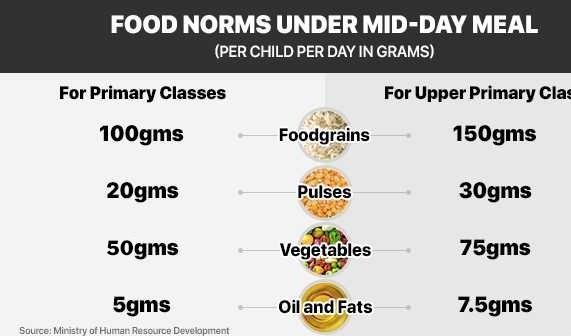
- The children studying of class I to class VIII in
- Government schools
- Government aided schools
- Special Training Centers and
- Madrasas (secondary religious schools) and Maktabs (elementary religious schools) which are supported under the Sarva Shiksha Abhiyan.
- It also covers the children studying in the schools which run under the Alternative and Innovative Education and National Child Labour Project across the country.
Implementation and Funding
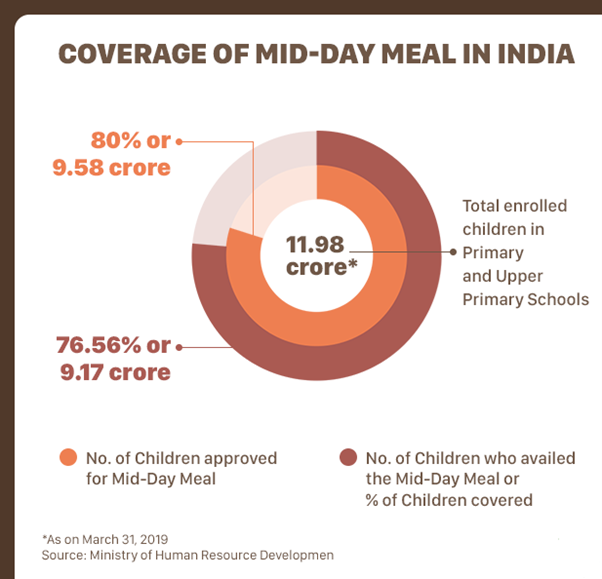
- The program is implemented in the form of three models.
International assistance
- There are numerous international charity organisations that help in the aid of government schools and deliver their help.
Centralized model
- There is an external Organisation, in the place of local on-site cooks.
- They cook the food and deliver it to the schools.
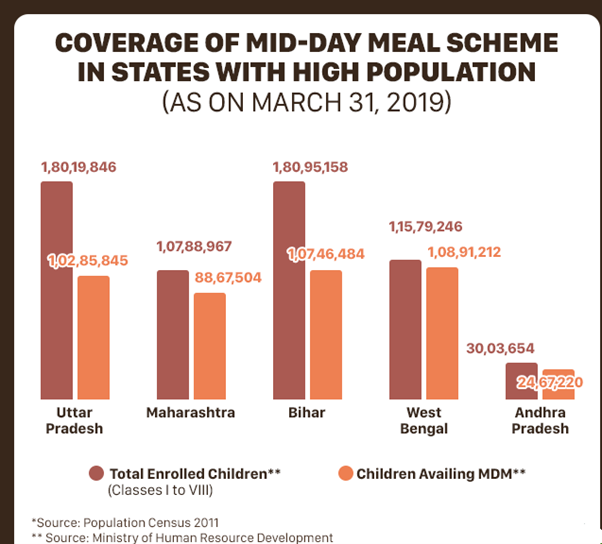
Decentralized model
- In this model, people prepare meals on the site with the help of local cooks, self-help groups and many other people.
- Each State/UT has to set up State Steering-cum Monitoring Committees (SSMCs) at the State, District and Block level to oversee the implementation of this scheme.
- This is a Centrally Sponsored Scheme.
- Hence, the cost is shared between the Centre (60%) and States (40%).
- Nodal Ministry is the Ministry of Education.
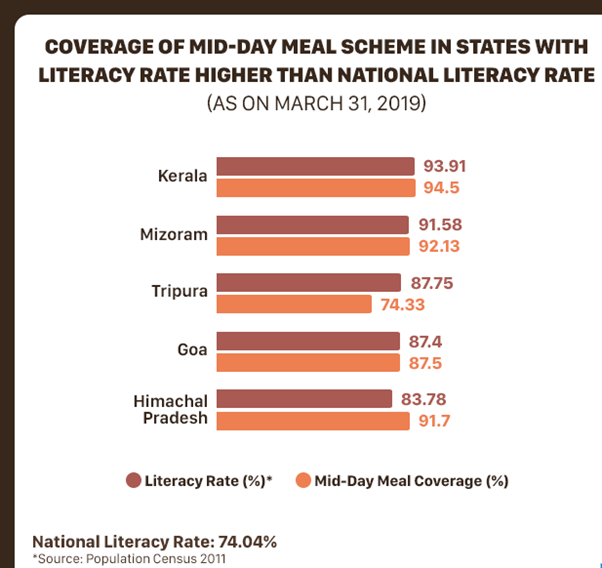
Key Issues in Implementation
- The Caste based discrimination in serving food is reported in states like Madhya Pradesh and Rajasthan.
- In several states, there is an irregularity in serving meals.
- Mostly there is an irregularity in supplying food grains to the schools.
- In states such as Jharkhand, Manipur, etc, community participation is poor.
- The food provided at several schools do not meet the nutritional standards and are of poor hygiene.
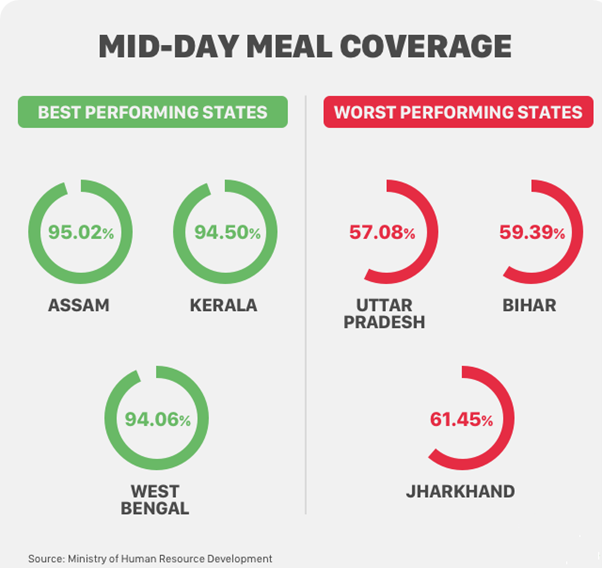
Initiatives taken by other states
- In addition to the students of classes I to VIII, the Andhra Pradesh government has extended the benefits of this scheme to the students of classes IX and X.
- In Bihar, under an initiative called Samparan, steel plates for eating were contributed by the people of various sections of the society to the schools.
- In the rural areas of states such as Chhattisgarh, Goa, Haryana etc, women Self Help Groups are engaged in the cooking work of the Mid-Day Meal scheme at schools.
- The Gujarat government follows a community participatory initiative called Tithi Bhojan.
- It is under the villagers voluntarily serving food to the school children on occasions such as birthdays, anniversaries, etc.
- It is also followed in the state of Haryana.
- Sneh Bhojan is a similar initiative in Maharashtra.
- The Kitchen garden is another practice that is employed in many schools across the country.
- Here the vegetables necessary for the Scheme are cultivated in the school garden.
- For the better implementation of the scheme, various schools promote community participation.
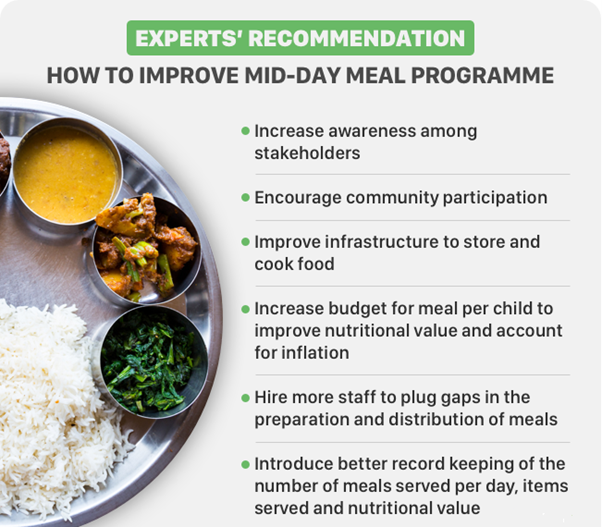
MDM Rules, 2015
- In accordance with the National Food Security Act (NFSA) 2013, Midday Meal Rules 2015 were published on September 30, 2015.
- Schools are empowered to utilize other funds for midday meals in case MDM funds get exhausted.
- It will be followed at the time of occasions where schools and other required bodies are unable to provide cooked meals to children.
- They are to provide food allowances to beneficiaries.
- Random monthly testing of meals is to be handled by accredited labs.
- Under this rules 2015, if children of any school don’t get food for 3 consecutive school days or 5 days in a month, the concerned state government has to fix the responsibility on a person or an agency.
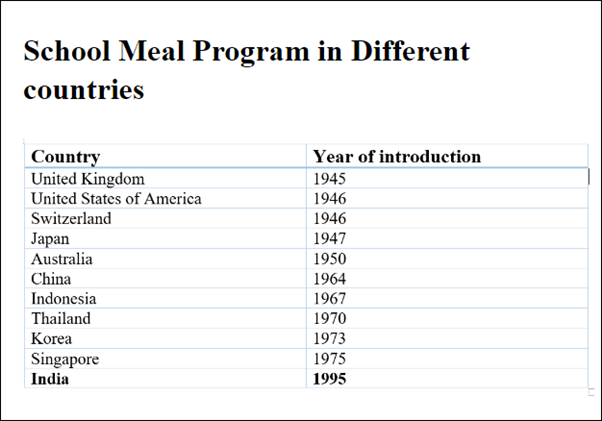
Salient Features of MDM Rules, 2015
- Each child from class 1-8 within the age group of six to fourteen years is eligible for a cooked nutritious meal every day except school holidays; with the following nutritional requirements:
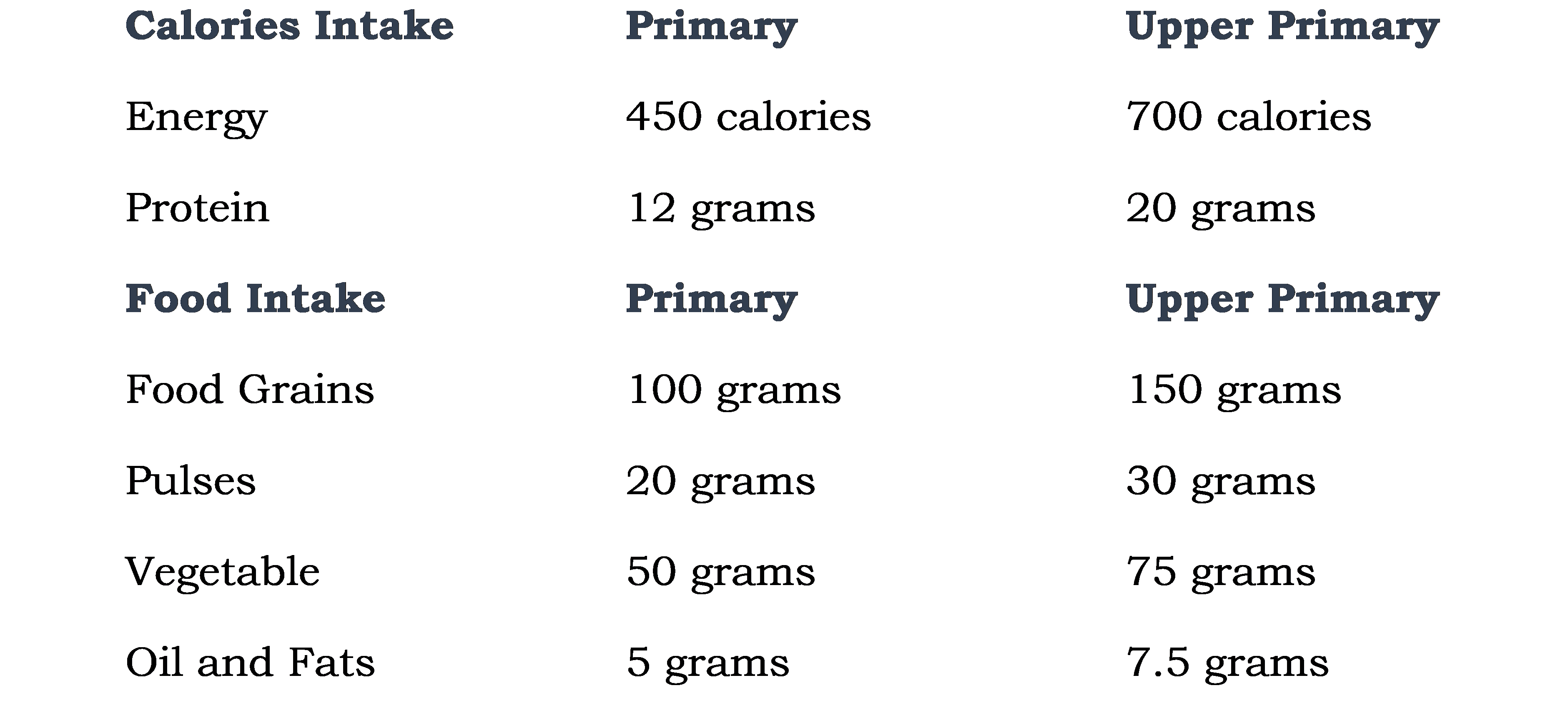
- The schools procure AGMARK quality items for preparation of midday meals.
- The meals are to be served in the school premises only.
- Each school should have a hygienic cooking infrastructure to cook midday meals in a hygienic manner.
- The School Management Committee (SMCs) plays a vital role in the monitoring of MDMS.
- The SMCs are mandated under the right to free and compulsory education act, 2009 or Right to Education Act, 2009.
- The headmasters or headmistress are empowered to utilize the school funds on the account of midday meal fund exhaustion.
- However, the same has to be reimbursed to the midday meal fund as soon as the school is credited with the MDM fund.
- The Food and Drugs Administration Department of the State may collect samples to ensure the nutritive value and quality of the meals.
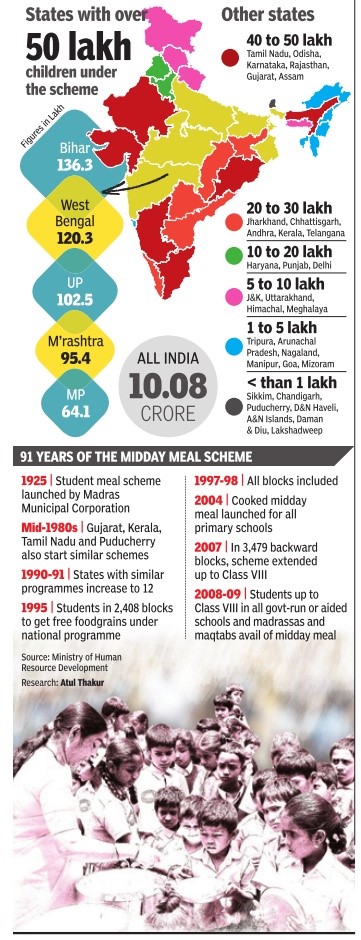
Benefits
Stunting reduced
- Lower stunting among children with mothers who had access to free school lunches, shows data from 1993-2016.
- Stunting i.e., low height for age, is caused by long-term insufficient nutrient intake and frequent infections.
- Stunting generally occurs before age two, and effects are largely irreversible.
- The prevalence of stunting was significantly lower in areas where the mid scheme was implemented in 2005.
- The scheme's impact on wasting (low weight for height) and stunting (low height for age) is also noteworthy.
- The percentage of children under five who were wasted decreased from 21% in NFHS-3 to 19.8% in NFHS-4.
- Similarly, stunting declined from 48% to 38.4% during the same period.
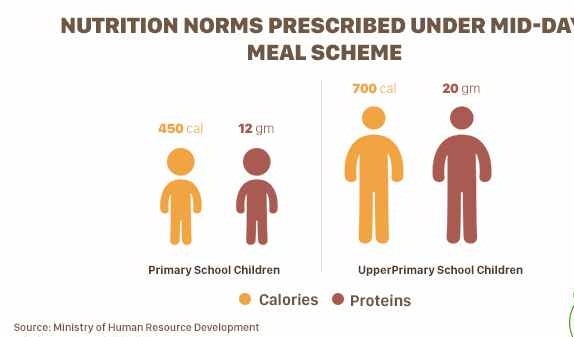
Inter generational benefits
- More than one in three Indian children are stunted, or too short for their age, which reflects chronic undernutrition.
- The fight against stunting has often focused on boosting nutrition for young children.
- But nutritionists have long argued that maternal health is the key to reduce stunting in their offspring.
2020 Global Nutrition Report
- India is one of 88 nations that are predicted to fall short of the global nutrition goals by 2025, according to the Global Nutrition Report 2020.
Nutritional Benefits
- The meals provided through the scheme are designed to meet the essential nutrient needs of growing children.
- The inclusion of diverse food items, including cereals, pulses, vegetables, and sometimes eggs, ensures a balanced diet.
- Adequate intake of proteins, vitamins, and minerals is vital for physical growth, cognitive development, and immunity.
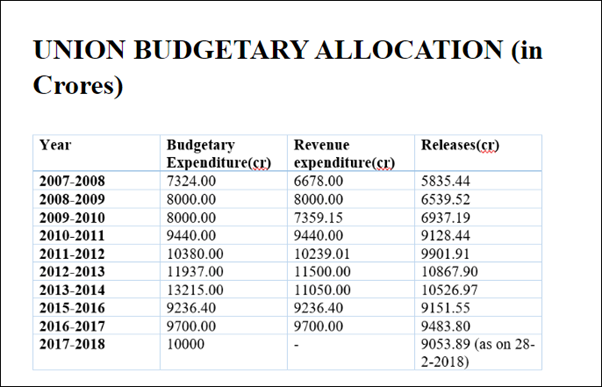
Leave a Reply
Your Comment is awaiting moderation.


